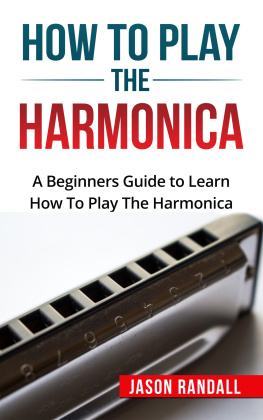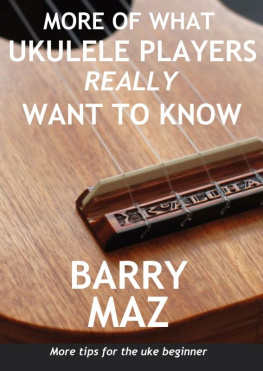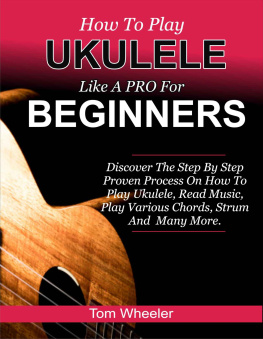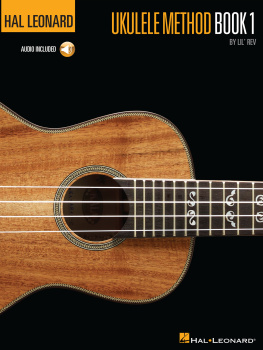HOW TO PLAY UKULELE
A Beginners Guide to Learn About The Ukulele, Reading Music, Chords, & Much More
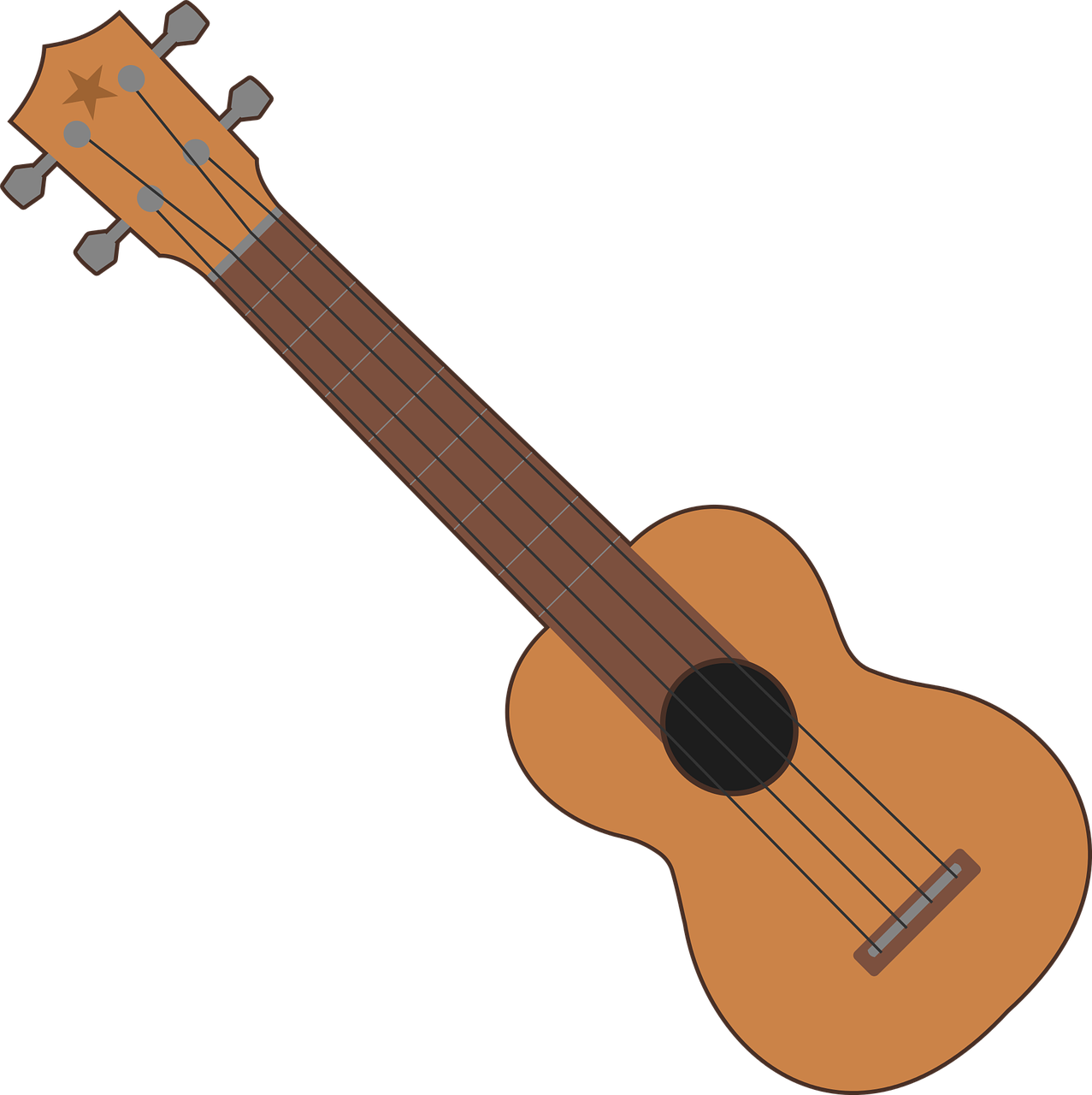
Jason Randall
Text Copyright Lightbulb Publishing
All rights reserved.
No part of this guide may be reproduced in any form without permission in writing from the publisher except in the case of brief quotations embodied in critical articles or reviews.
Legal & Disclaimer
The information contained in this book and its contents is not designed to replace or take the place of any form of medical or professional advice; and is not meant to replace the need for independent medical, financial, legal or other professional advice or services, as may be required. The content and information in this book has been provided for educational and entertainment purposes only.
The content and information contained in this book has been compiled from sources deemed reliable, and it is accurate to the best of the Author's knowledge, information, and belief. However, the Author cannot guarantee its accuracy and validity and cannot be held liable for any errors and/or omissions. Further, changes are periodically made to this book as and when needed. Where appropriate and/or necessary, you must consult a professional (including but not limited to your doctor, attorney, financial advisor or such other professional advisor) before using any of the suggested remedies, techniques, or information in this book.
Upon using the contents and information contained in this book, you agree to hold harmless the Author from and against any damages, costs, and expenses, including any legal fees potentially resulting from the application of any of the information provided by this book. This disclaimer applies to any loss, damages or injury caused by the use and application, whether directly or indirectly, of any advice or information presented, whether for breach of contract, tort, negligence, personal injury, criminal intent, or under any other cause of action.
You agree to accept all risks of using the information presented in this book.
You agree that by continuing to read this book, where appropriate and/or necessary, you shall consult a professional (including but not limited to your doctor, attorney, or financial advisor or such other advisor as needed) before using any of the suggested remedies, techniques, or information in this book.
This book contains many examples on how to play the ukulele and theres no better way to learn than hearing the guitar audio clips alongside reading. You can follow along with this book using the guitar audio examples found here:
https://soundcloud.com/jason_randall/sets/how-to-play-ukulele
Or by searching this books title in SoundCloud.
Table of Contents
Chapter 1
Introduction
If you are reading this, you have decided you want to learn how to play the ukulele, an instrument that is compact, versatile and exploding in worldwide popularity with musicians of all ages! This book will teach you everything you need to know to build a solid foundation and begin your musical journey.
A Brief History of the Ukulele
The modern ukulele is a descendent of the lute, and is more specifically an adaptation of the dangerously named but gentle sounding 'Portuguese Machete', first introduced in the volcanic archipelago of Hawaii. When the Portuguese Cavaquinho (another word for portuguese machete) virtuoso Joao Fernandes arrived in Honolulu in the late 1800s, it is said that the locals compared his fingers to "uku lele" which translates to something like "jumping fleas". Another, slightly more profound translation is "the gift (uku) that came here (lele)". Whatever the etymology, the uke has had a profound effect on Hawaii's culture.
In the last century, thanks to its portability, playability, affordability, and visibility thanks to certain popular music performers, the uke has become embraced the world over. It is a versatile harmonic and melodic instrument capable of playing many genres of music, from rock to pop to jazz to folk, and not just background tunes at Luaus!
This book will teach you everything you need to know to get started on the instrument from basic anatomy, to tips on buying a ukulele, how the instrument works, how to read ukulele music, chords, note names, and melodies. By the end, you will be well on your way in your musical journey. Now lets get started!
Chapter 2
Ukulele Anatomy 101
Topics covered:
- Parts of the ukulele and what they look like
- How ukuleles work
Parts of the Ukulele

Body: This is the largest section of the uke and is responsible for the resonance and overall tone of the instrument. The vast majority of ukuleles are hollow-bodied, though rare solid-body electric ukes, or solid ukes do exist. Bodies come in all shapes and sizes and are made mostly of wood, but also come in plastic, graphite or and even cheap cardboard.

Bridge: Located on the lower bout (or lower half) of the uke body, the bridge acts as an anchor for the strings. When re- stringing the instrument, you must first fasten the strings to the bridge.

Frets: The metal (or sometimes wood or plastic) wires that lie on the fretboard, perpendicular to the strings. When the string is depressed behind the fret, the length is effectively shortened and a unique pitch is produced. The closer to the bridge you get, the higher the fret number, the shorter the string length and therefore the higher the pitch (and vice versa).

Fretboard: A plank of wood attached to the neck in which the frets are embedded. This is also called the fingerboard as it is the main point of contact for your fretting hand fingers. This is sometimes the same piece of wood as the neck.
The Headstock the uppermost part of the uke, located at the end of the neck, above the nut and fretboard, where the tuning posts hold the strings in place. This is also the part where the manufacturers name is typically displayed displayed, and each model has its own distinctive shape.

Neck: Another major part of the uke connected the body, on which the fretboard lies. Necks can be carved out of the same piece of wood as the body (neck-through) or more commonly, be a separate piece altogether which is bolted on or glued to the body.
The Nut is a grooved piece of bone, plastic, or metal through which the strings pass, separating the fretboard from the headstock. It is essentially fret number 0, and all frets are numbered relative to the nut.

Next page

